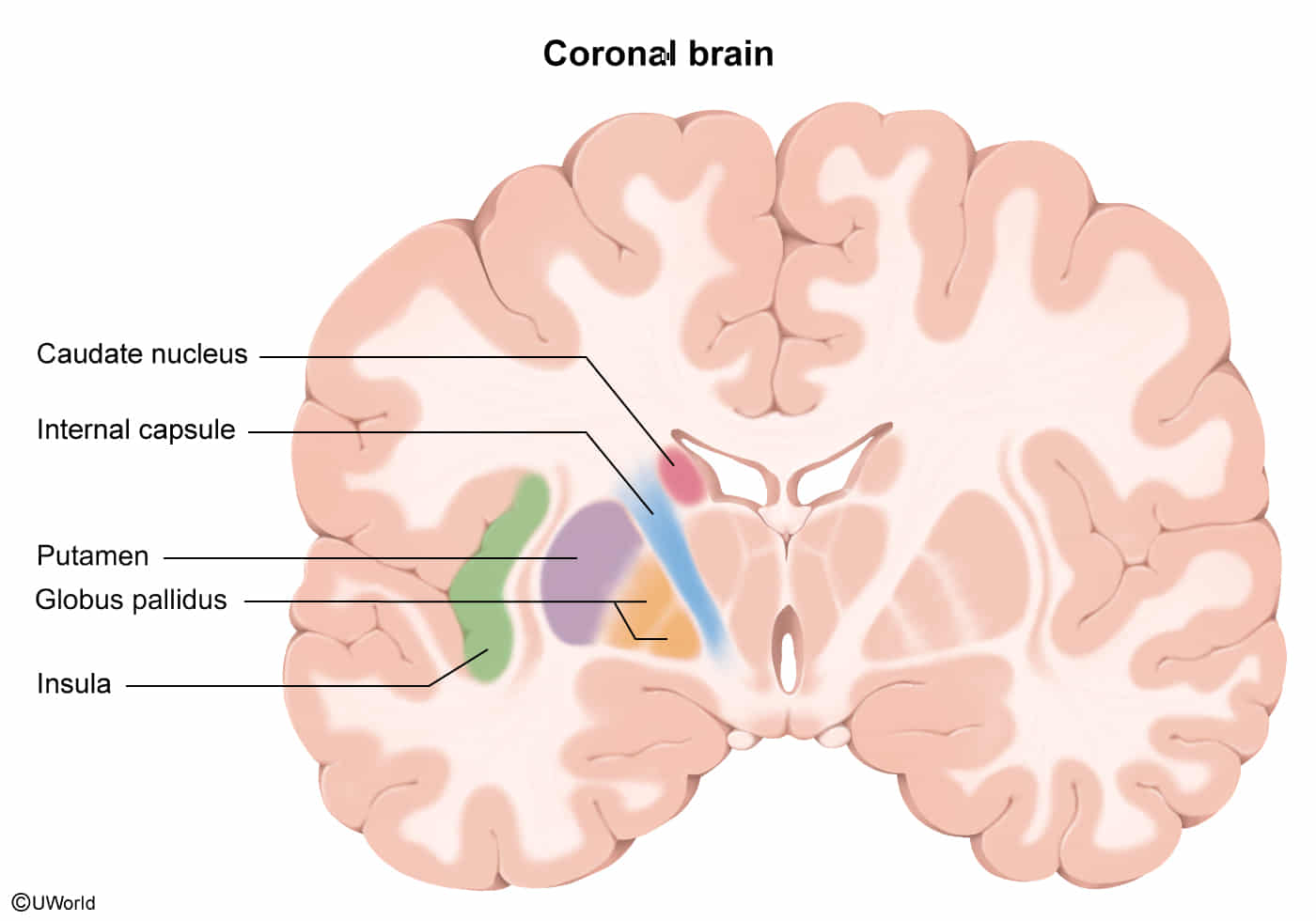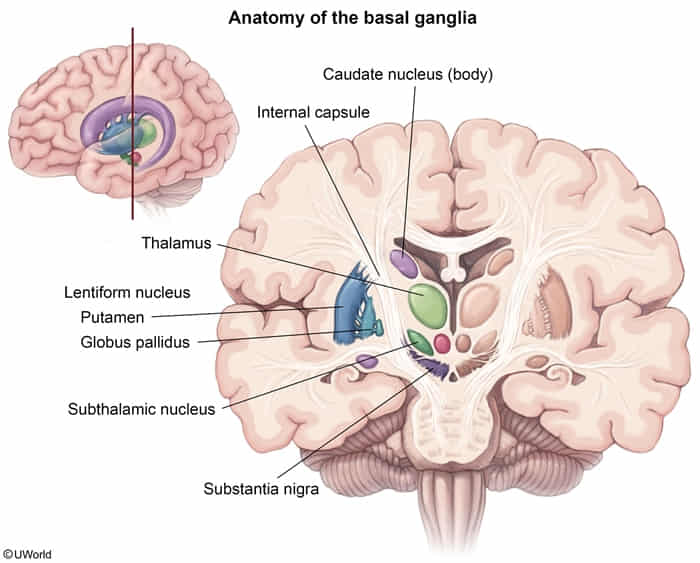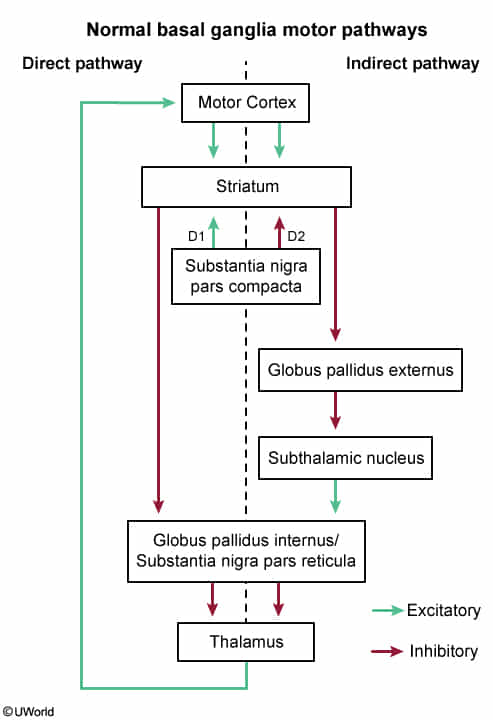Overview


- Striatum
- Components
- Caudate nucleus
- Putamen
- The caudate nucleus is a curved or C-shaped structure in its complete form. The head of the caudate can be identified in the inferolateral walls of the frontal horns of the lateral ventricles. The caudate nucleus and putamen together make up the striatum, which is critical for movement control and coordination along with behavioral regulation.
- Clinical significance: Molecular changes in Huntington disease lead to neuronal loss in the striatum
- Components
- Lentiform nucleus
- Components
- Globus pallidus
- Putamen
- Clinical significance: Wilson disease (hepatolenticular degeneration) leads to an impaired function of the lentiform nucleus due to copper accumulation.
- Components
- Subthalamic nucleus
- Clinical significance: Effect of lesion: contralateral hemiballismus
- Substantia nigra
- Clinical significance: Parkinson disease is characterized by neuronal degeneration in the substantia nigra
Cortico-basal ganglia-thalamo-cortical loop (CBGTC)
The purpose is to regulate the activity of motor cortex, using thalamus.

Drawing 2025-03-24 09.33.38.excalidraw
⚠ Switch to EXCALIDRAW VIEW in the MORE OPTIONS menu of this document. ⚠ You can decompress Drawing data with the command palette: ‘Decompress current Excalidraw file’. For more info check in plugin settings under ‘Saving’
Excalidraw Data
Text Elements
Huntington disease
Parkinson disease
Caudate
Embedded Files
a60f1366e5b98c6d18dc96557cbc6d71423b447b: L52683.jpg
Link to original
- Direct pathway: Starts with cortical excitation of D1-receptor-expressing Medium Spiny Neurons (MSNs) in the Striatum.
- D1 Receptor: Dopamine binds to and activates the D1 receptor. The consequence of this activation is typically excitatory for the neuron (e.g., increased cAMP, making it more likely to fire).
- Like an air conditioner that cools the room (inhibits GPi). Dopamine makes the AC run stronger. Removing dopamine makes the AC weaker.
- Indirect pathway: Starts with cortical excitation of D2-receptor-expressing Medium Spiny Neurons (MSNs) in the Striatum.
- D2 Receptor: Dopamine binds to and activates the D2 receptor. The consequence of this activation is typically inhibitory for the neuron (e.g., decreased cAMP, making it less likely to fire).
- Like a heater that warms the room (excites GPi). Dopamine turns the heater down. Removing dopamine lets the heater run hotter.
- Either way, dopamine stimulates the activity of cortex.
- Parkinson disease: no dopamine → no stimulation
- Huntington disease:
- Early: D2-MSNs in striatum is affected → can’t inhibit indirect pathway → too much activation
- Later: all striatum damaged → no activation at all
Mnemonic
The direct pathway Comes Straight Into the Thalamus:
- Cortex → Striatum → Internal GP → Thalamus.
The indirect pathway Comes Straight, Exits, then Sidesteps Into the Thalamus:
- Cortex → Striatum → External GP → STN → Internal GP → Thalamus.